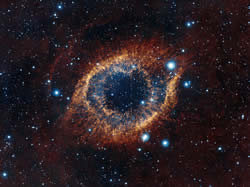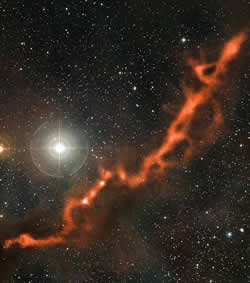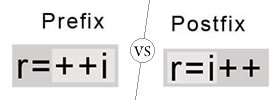Difference between Nebula and Molecular Cloud
Key Difference: Nebula is a cloud of dust in deep space. Whereas, a molecular cloud is a type of nebula. The formation of molecules is permitted due to its density and size.
 Nebula is a cloud of gas and dust in space. The word Nebula has been derived from the Latin word, meaning “cloud”. Nebula is also called as nebulae. Dust and gas clouds are called nebula. In the earlier time, galaxies were also called nebula by astronomers because of their fuzzy appearance. However, nowadays the word nebula is used for extended objects consisting mostly of gas and dust. They come in many shapes and sizes and forms in many different ways.
Nebula is a cloud of gas and dust in space. The word Nebula has been derived from the Latin word, meaning “cloud”. Nebula is also called as nebulae. Dust and gas clouds are called nebula. In the earlier time, galaxies were also called nebula by astronomers because of their fuzzy appearance. However, nowadays the word nebula is used for extended objects consisting mostly of gas and dust. They come in many shapes and sizes and forms in many different ways.
 Molecular cloud is a type of nebula. The formation of molecules is permitted due to its density and size. The molecules which are formed are most commonly molecular hydrogen. A molecular cloud is also known as a dark cloud. Molecular cloud is an interstellar cloud that is solid because of its internal dust grains. They are very irregularly formed and there is no clearly defined outer boundaries. The largest molecular cloud is visible through the naked eye which appears in the sky because of its brightness against the background of the Milky Way Galaxy. The best example of molecular cloud is the Coalsack in the southern sky.
Molecular cloud is a type of nebula. The formation of molecules is permitted due to its density and size. The molecules which are formed are most commonly molecular hydrogen. A molecular cloud is also known as a dark cloud. Molecular cloud is an interstellar cloud that is solid because of its internal dust grains. They are very irregularly formed and there is no clearly defined outer boundaries. The largest molecular cloud is visible through the naked eye which appears in the sky because of its brightness against the background of the Milky Way Galaxy. The best example of molecular cloud is the Coalsack in the southern sky.
Comparison between Nebula and Molecular Cloud:
|
|
Nebula |
Molecular Cloud |
|
Definition (Dictionary.com) |
A cloud of interstellar gas and dust. (Formerly) any celestial object that appears nebulous, hazy, or fuzzy, and extended in a telescope view. |
A cool dense interstellar region composed of a wide variety of molecules, mainly hydrogen, plus some dust, in which stars are forming. |
|
Type |
|
Interstellar cloud |
|
Also known/called as |
Nebulae |
Dark cloud |
|
Contains |
Nebula contains carbon, nitrogen and oxygen, and then they finally expand and merge. |
Ionized gas, i.e., Plasma. |
Image Courtesy: space.com, upload.wikimedia.org









Add new comment